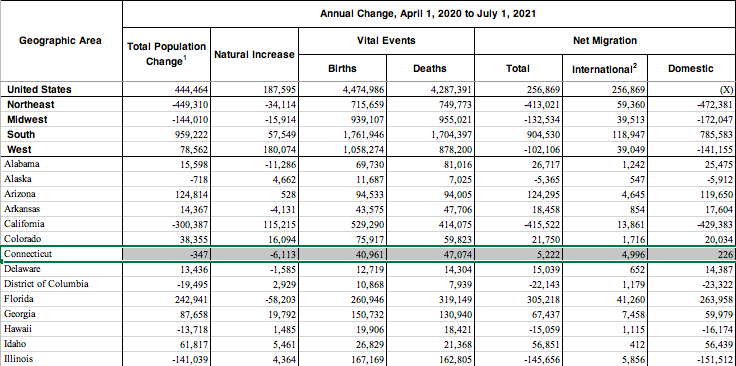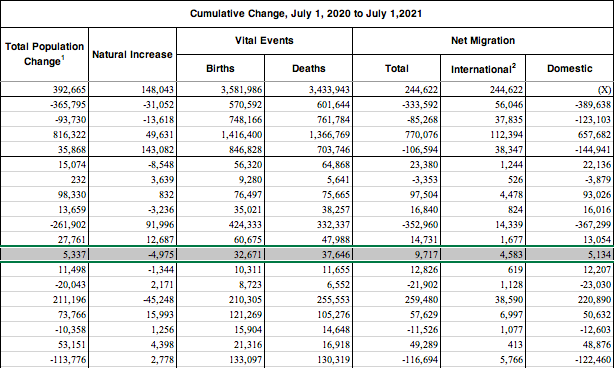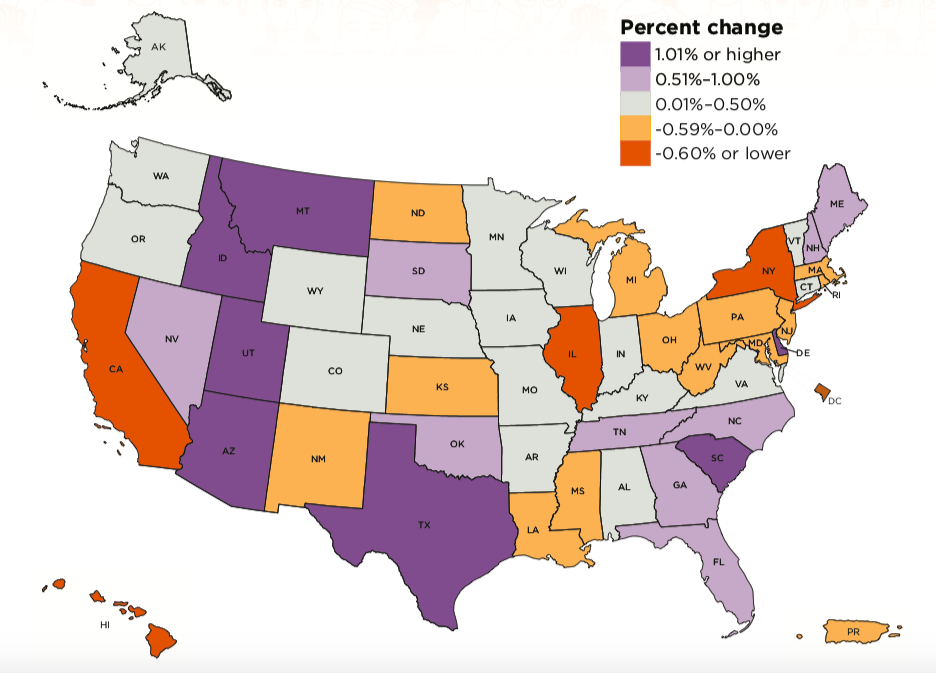Reports from both lawmakers and real estate agents indicated that during the COVID-19 pandemic of 2020 and 2021, scores of wealthy New Yorkers fled the city and bought up homes in Connecticut, but numbers from the U.S. Census Bureau show mixed results for Connecticut’s overall population.
The Census Bureau released state data for 2020 and 2021, showing that between April, 1 of 2020 and July 1, 2021, Connecticut saw a small net decrease of 347 in the state’s overall population.
Net migration into the state during that period was 5,222, with almost all of that coming from international migration and being offset by 6,113 more deaths than births, known as the “natural increase.”
However, when measured over a twelve-month period from July of 2020 to July of 2021, Connecticut saw a population increase of 5,337, with domestic migration outpacing international migration and the influx of new residents surpassing the net loss of 4,975 people due to deaths.


This was the first time since 2010 that the Census Bureau found more people moved into Connecticut from elsewhere in the United States than left. Net domestic migration between 2011 and 2020 averaged -21,947.
But the three months between April and July of 2020 appear to have had a big impact on Connecticut’s population numbers.
The overall net domestic migration for Connecticut during the fifteen-month period beginning in April of 2020 was 226 people, meaning that Connecticut lost almost as many residents to other states during the onset of COVID-19 as it gained throughout the twelve-month period from July 2020 to July 2021.
Throughout the course of the pandemic, real estate agents indicated they saw record demand for property in Connecticut with well-off individuals and families, largely from New York, offering cash for houses well above asking price.
Lawmakers also saw this as a moment when Connecticut would turn the tide of perpetual population loss, with Gov. Ned Lamont saying an influx of taxpayers would be good for state government’s bottom line during an October 2020 news conference.
But the overall result is mixed. Those moving into Connecticut likely had ample spending power, which could bring increased income tax revenue to the state, but for nearly every house sold and every new resident, Connecticut also saw someone move out resulting in an overall flat population trend during the pandemic.
Other states saw massive decreases in population during the same fifteen-month time period, with New York losing 365,336 people in total with 407,257 more people leaving New York for other states than coming from them. California and Illinois also topped the lists for total population loss.
Meanwhile, Texas saw a population increase of 382,436, and Florida saw an increase of 242,941.
Overall, the Northeast lost 449,310 residents and the Midwest declined 144,010, while the South picked up 959,222 new residents and the West 78,562.
According to the Census Bureau, the United States saw its lowest rate of population increase in the nation’s history at .1 percent, which they attributed to lower international migration, decreased fertility and increased deaths due to COVID-19.
“Population growth has been slowing for years because of lower birth rates and decreasing net international migration, all while mortality rates are rising due to the aging of the nation’s population,” said Census Bureau Demographer Katie Wilder in a press release. “Now, with the impact of the COVID-19 pandemic, this combination has resulted in a historically slow pace of growth.”
Connecticut’s population growth stalled and began to decline starting around 2013. According to the Census Bureau, Connecticut’s population increased only .9 percent between 2010 and 2020.


seth rich
December 29, 2021 @ 7:16 pm
The only reason CT, NY, NJ and PA had an increased death rate was the political move of shunting covid positive patients into nursing homes. Where this wasn’t done, such as near by Rhode island, the expected deaths actually declined 13% in 2020. Of course the New yorkers have flooded CT and Ri and have ruined the housing market for locals making the cost of living even worse. that has caused the young educated class to continue to flee. So the population increase the far left are so thrilled about is due to wealthy people fleeing the dangerous hell hole of NY City (just ask them, they’re everywhere!) and uneducated non english and often non-christian poor people replcacing native educated middle class new englanders. the new yorkers, if they have school age kids, most don’t, certainly aren’t going to send them to public school unless it’s in greenwich. Go to the grocery store and check out the average age. In the Stonington, CT/Westerly, RI area the average age is about 58. Scary. I asked my mid-western relatives what they thought of the area and my nephew said, “it’s a very nice retirement community!” Schools close and are converted into either senior housing or section 8 crap. all the money for ny city is not going to save the failed policies of connectiuct.